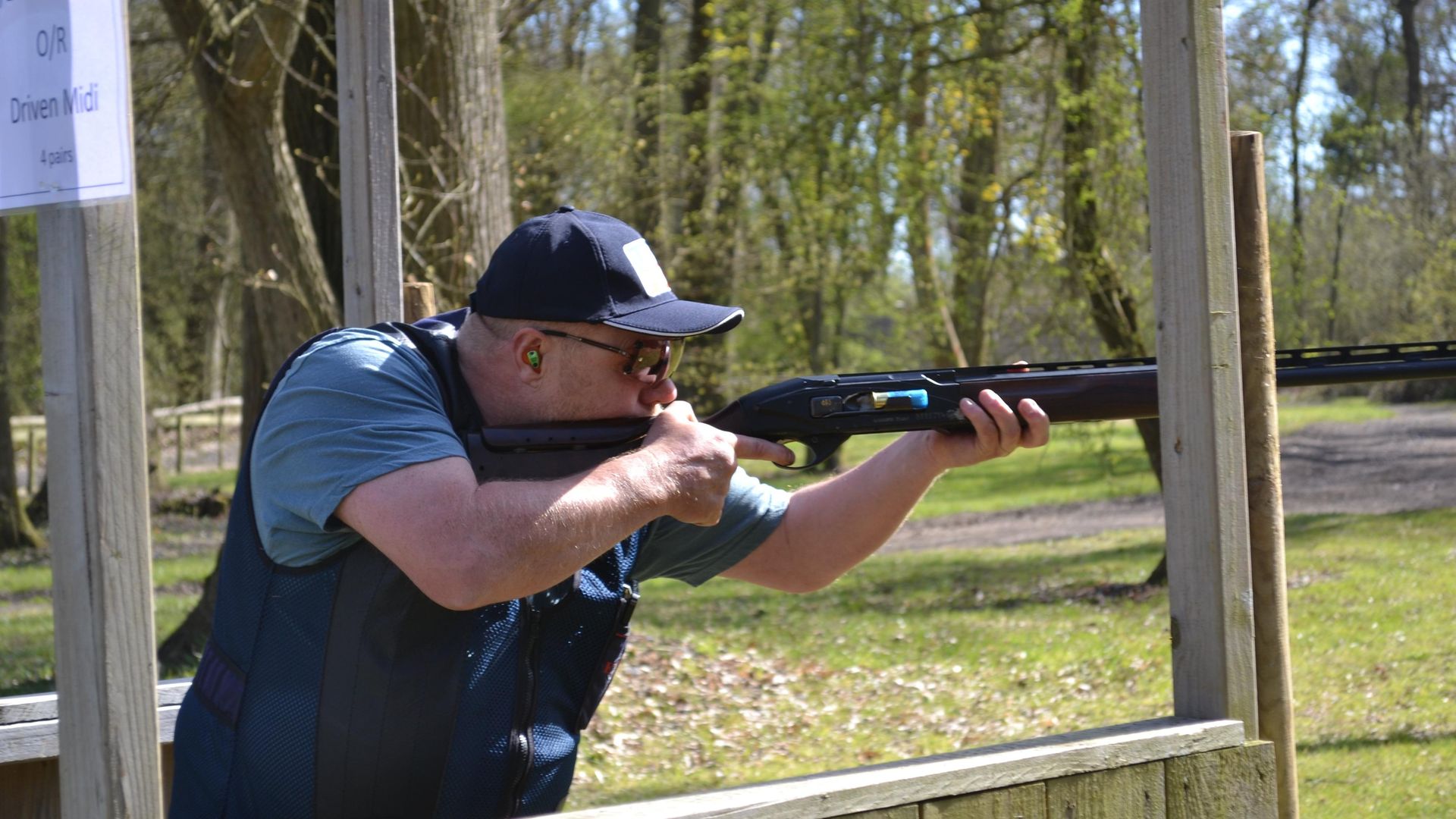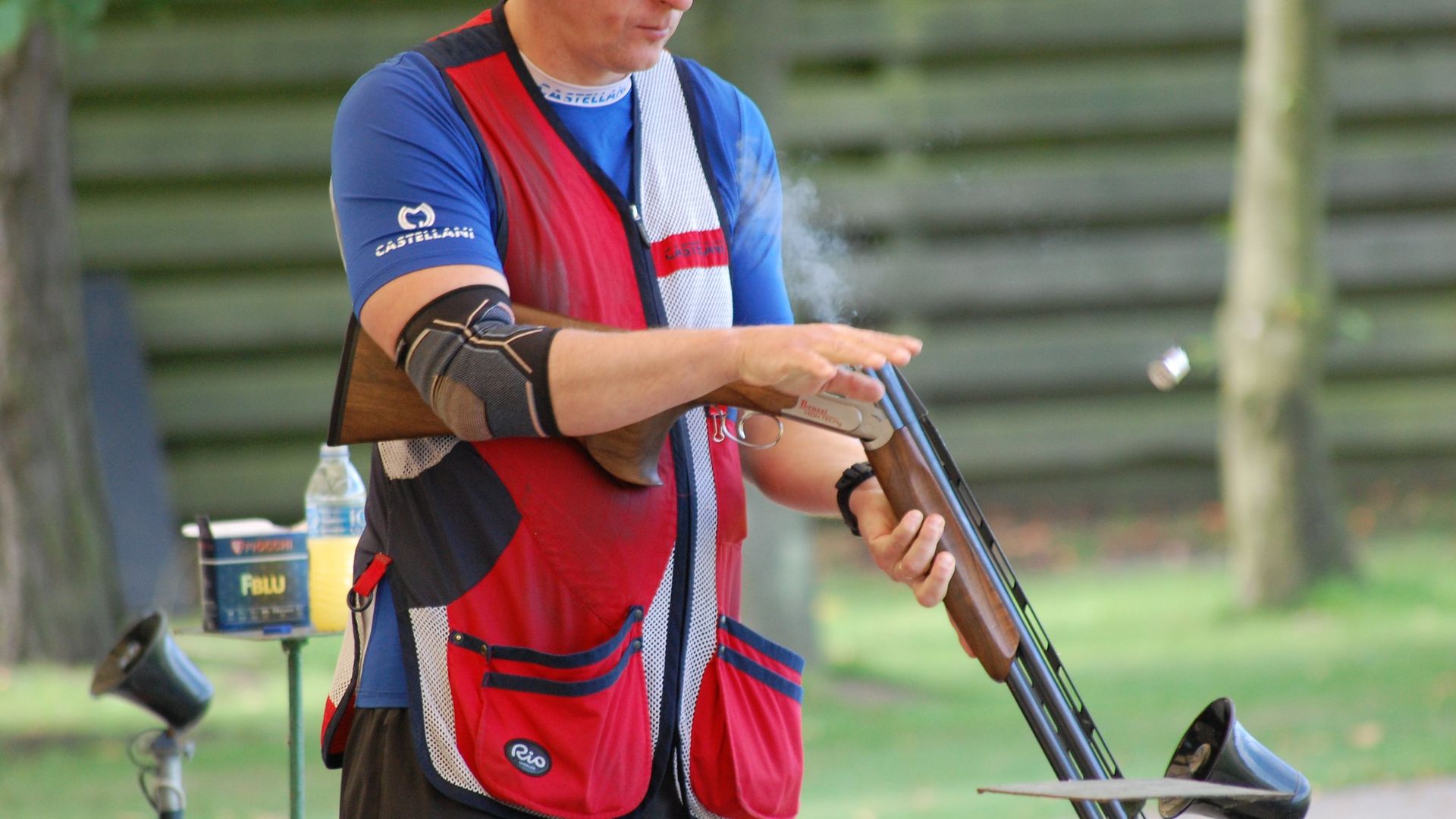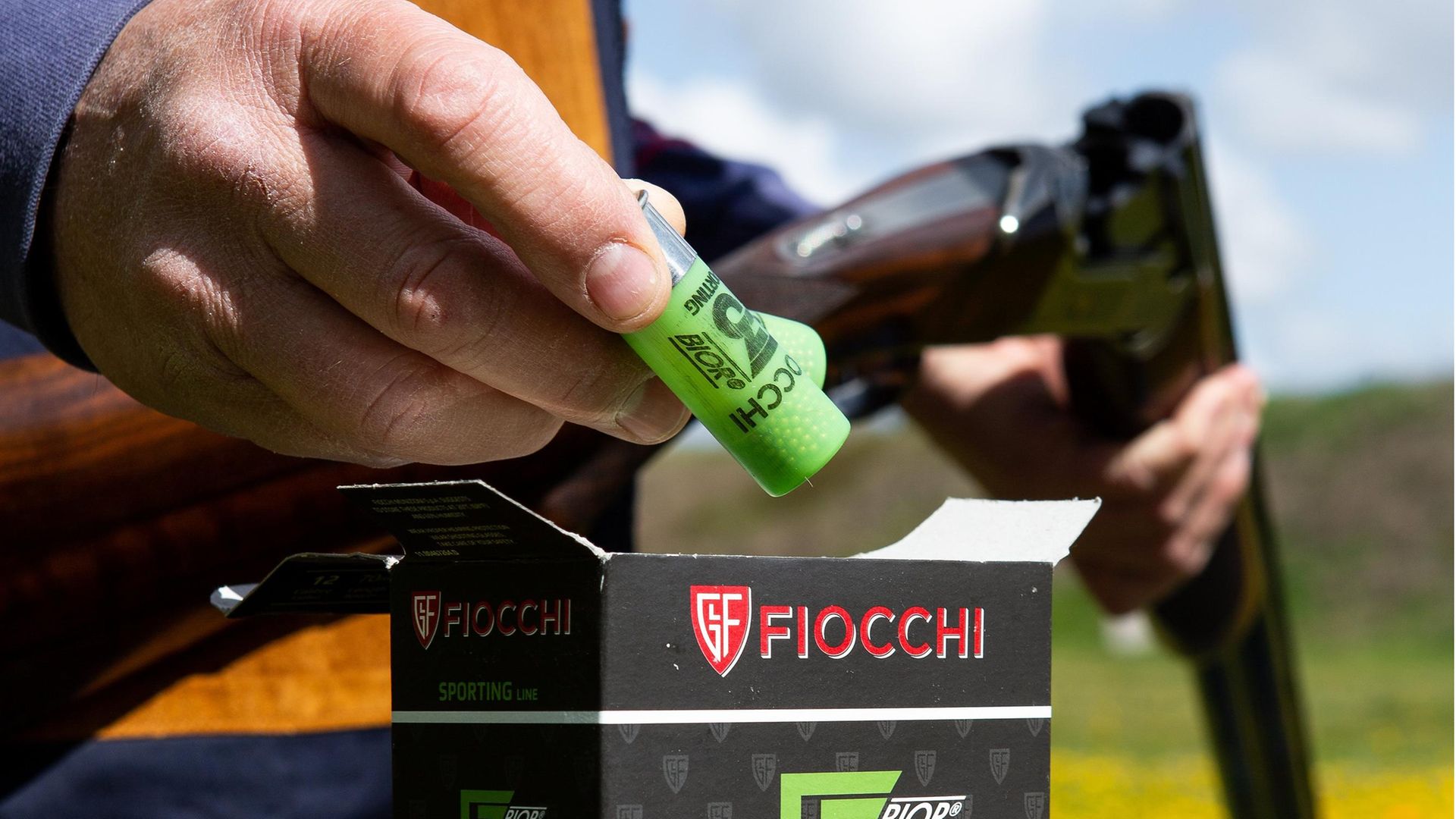Clay Shooter magazine's resident kit tester, Drennan Kenderdine, explains how he goes about testing the latest cartridges & offers advice to help you make the right choice
I’m certainly one of the lucky ones in the shooting world. One of the perks of my job is testing shotgun cartridges, and I’ve been doing this since I was in my late teens. If there’s one question I get asked over and over again, it’s this: how do you test cartridges? It’s a one-line question that has many answers...
Testing cartridges is a very personal thing, and each person may have a different approach. Throughout this article, I’ll explain how I go about testing cartridges, and why. Hopefully, you can use the information to assess and choose your own ideal load!
 credit: Emily Damment
credit: Emily Damment
First things first
The first thing I assess with any cartridge is how they are packaged. I’m not necessarily looking for boxes with artwork fit for the National Gallery – in fact sometimes, the posher the box, the more my experience warns me that perhaps some of that budget should have gone into the development of the cartridge inside it.
However, we buy how we eat – with our eyes! And if the packaging echoes some supermarket knock-off label, not many folks will be engaged enough with the product to part with their cash. So, it’s a balancing act when it comes to the appearance of the box. The appearance of the cartridge itself is similarly assessed; you want it to look good of course, and I love big ferrels and shiny plastic, it feeds my soul and ego, but it won’t tell you that much about what’s inside. Recently, I’ve seen cartridges from the Continent that are finished superbly, but shoot like bucking broncos!
 credit: Emily Damment
credit: Emily Damment
The most important elements
For most people, when it comes to cartridge testing, the main concern is either the recoil, the killing capabilities, the price, or all three of the above. The latter can be answered swiftly, or explored in serious depth. The lengthy version I will save for a future article; the short answer is simple. Price is down to the depth of your pockets, and only you know how much you can spend on your ammunition, but bear in mind that you do often get what you pay for in this game.
With regards to killing capabilities, I know people who are looking for something that obliterates clays and others who only care that the clay is breaking and earning them a hit, not a miss, on the card. Psychology comes into this in a big way. Personally, I like to watch the clay being obliterated!
Recoil is a subject I could write about until this computer runs out of ink. It’s really the thing that everyone should be paying attention and looking into if they haven’t already. I find this part of testing fascinating, and will be covering the difference between recoil, and perceived recoil, a little later in this article.
 credit: Cervus UK
credit: Cervus UK
Time to chill
This may sound odd, but one of the first things I do is plunge the cartridges I am testing into the freezer. Yep, the freezer. If we’re really honest, there’s an awful lot of people who store cartridges in cold and damp conditions. There are even people who have left cartridges in the car overnight during the winter because they have gone away for a weekend’s shooting... in fact, there are bloody thousands of us doing this!
Every day on social media I see posts from people who have been shooting, and afterwards the barrels are dirtier than usual with unburnt powder. They can’t figure out why. Well, it’s simple – their cartridges have been stored for too long in damp, cold conditions. So, my freezer test mimics the reality of how some (many?) people treat their cartridges during winter. There’s a particular brand that has the absorbency of a sponge when left in damp conditions; keep them somewhere warm and dry, and they work perfectly. This test of mine throws up a lot of information, and the good news is that cartridges loaded right here in the UK seem to win it every time...
However, what this test really highlights is that we should heed the advice written on the side of the box – keep your cartridges somewhere warm and dry! If you haven’t, you might be looking for a cleaning rod to push the wad out the barrel because the powder has been altered (by you!).
If you have stored them somewhere cold and damp, placing them next to a radiator should help to fix the problem. This can take as little as overnight, but I recommend 24 hours. Oh, and I’d also recommend ensuring the radiators are actually on! You’d be surprised how many people have neglected this important part of the process.
 credit: Drennan Kenderdine
credit: Drennan Kenderdine
Horses for courses
After the cold test, let’s get the ammo out to a shooting ground and see what it can do. Firstly though, what type of ammo have you got on test? Is it designed for Skeet, Trap or Sporting? Is it a 21, 24, 27, 28, 30, 32g etc load? Is it entry-level, club or competition spec? These factors are important.
Ever seen someone punching an entry-level No.9 shot on a AAA target with a range measured by the calendar, and then blaming the cartridge when it fails to break? Yeah, that’s because the cartridge is being used for something it was never designed for. So, the bottom line here is that cartridges need testing in the environment they were designed for, and don’t expect them to perform in anything other than that environment.
Skeet
Skeet cartridges are by far the easiest to test, in my opinion. You have two loads to contend with: a 24g for Olympic Skeet and 28g for English Skeet. You can find both these in plastic and fibre wads, and it’s as simple as shooting a round of Skeet to see how they perform in the discipline they were intended for. Skeet shooting tells you a lot about the cartridge, firstly because it provides great recoil information and, more importantly, recoil combined with muzzle flip. Both of these factors are important, especially when it comes to shooting pairs. If the muzzle flip and recoil are too great, then alignment with the second shot will be off. In Skeet, tenths of seconds are critical for both eye and barrel alignment for target acquisition.
The second reason Skeet is a good testing discipline is because the velocity of impact can be seen clearly at the ranges Skeet is shot at. The impact highlights not only the speed of the cartridge but also the way the pattern is performing. This is another reason why Olympic Skeet is shot with 24g loads, as the recoil and barrel flip are generally significantly different to that of a 28g... in other words, less! Drop the recoil of a 28g load to match that of a 24g, and you’ve altered the speed of the cartridge so much you’d be better off throwing rocks.
So, taking all the above factors into consideration, you can see that Skeet can also be a good test for Sporting cartridges because it can provide great information on how several elements of the cartridges perform within the ranges set out in Skeet, which happen to be similar to a biblical amount of Sporting targets.
Trap
Trap cartridges are similar to Skeet in that you have two weights, 24g and 28g, again with plastic and fibre wads. The difference here is what type of Trap shooting they have been designed for, and what level the cartridge is aimed at, i.e. entry level, club or competition. When I am testing a Trap cartridge, I always start with DTL and then move on to ABT, just to get a feel of what it’s like to shoot on an easier target. This will provide some feedback on its capabilities and behaviour. Again, this isn’t a complicated test, especially if you keep things simple and don’t go looking for 100/300 when your average is 80/300. The reality of expectations must prevail!
While I’ve mentioned expectations, Trap targets do require and deserve the chokes that the manufacturers and champions alike suggest and use. Yes, you can break some DTL targets with a Quarter choke, even cylinder, but I’ve not met someone with a title or a consistent 100/300 score that does this. So, give the cartridge a chance in the first place and allow it to show its character. This won’t mean that the results are all positive. You can shoot a cartridge that absolutely creams the clays, but the recoil is so violent it’s almost unbearable. This is what testing is all about, and it’s also a big part of how new cartridges are developed. The laboratory only tells one side of the story, and trust me here when I say that the shooter really tells the other side.
Sporting
The longest and most involved of all tests is for Sporting cartridges (and game cartridges), due to the endless variety of angles and distances. I start with two very simple targets first – an easy going-away and an easy incomer. I start with these targets no matter what level the cartridge is aimed at, because this test instantly tells me a lot about the biggest element I am looking to assess – the recoil. A side note here... recoil must be observed in an open environment in order to get a true measurement of recoil, as opposed to ‘perceived’ recoil.
An example of perceived recoil, as opposed to true recoil, actually happened at this year’s Lyalvale Express Masters, held at Atkin Grant & Lang, where some of the stands are in enclosed wooden structures. Some shooters mentioned that the cartridges used on one of these stands had way too much recoil. When it was pointed out to them that the recoil they thought they were feeling was actually the sound pressure bouncing back, just like a rock concert when the music can be at a level that actually hurts you, they looked at me dumbfounded.
I asked them to shoot the same cartridge but from outside the wooden booth, in an open environment, to allow the noise pressure to escape. The look of amazement on their faces was a BAFTA moment. There’s a big difference between recoil and perceived recoil, and this is why I always test cartridges in an open environment.
After assessing the recoil, I’m looking for killing capabilities. These two targets are also great for showing how the pattern is working. The way the target breaks, the dust, shards and splinters as they separate, tells me a lot about how the pattern is unfolding – whether it is a tight-patterning one or a fast-opening one (more on this in ‘Things to bear in mind’ below!) – and whether it is a hard-hitting, intermediate or soft shell. From just a very small piece of clay breaking away, the velocity of that piece can visually tell you if it was hit hard, and therefore if the cartridge speed is high... or not.
Once this very important test is done, you have some knowledge of how the cartridge behaves, and it’s time to give it a try on some more testing targets – as tough as you like! Pick one that makes you drop to your knees and pray to the Almighty for help and guidance! Jokes aside, the secret here is to not overdo your own skill set and to keep things real. You’re testing shotgun cartridges, not ammo for defending the realm against alien attack. Once the ‘tuff stuff’ is done and you’ve assessed its recoil, range capabilities and impact velocity, there’s nothing finer than whipping straight into a round of 100 Sporting clays and giving it your all.
Things to bear in mind
I don’t test cartridges through guns I’m not familiar with. I use the same gun I’ve used for years and years. I know exactly how it behaves, the way the chokes perform and how I and it get on (which, incidentally, is like a house on fire). Testing a gun, in contrast, reverses this approach – I will use a cartridge I am very familiar with in a gun I am not. This way, I know what the ammo can and can’t do, and this highlights the characteristics of the gun on review.
I also don’t use pattern plates. Controversial, I know, and I am absolutely not saying that pattern plates are not useful... this is just how I personally assess cartridges. To me, looking at a pattern on a piece of cardboard only tells me a small part of the story, and invariably confuses the shooter, producing under- or over-confidence. A simple clay target to start with (you know, the thing you’ll actually be shooting with the shell) will tell you enough about how it performs. Then move forward to more advanced targets, longer distances etc. If it explodes into dust, you can conclude that the cartridge is patterning well enough through your gun to obliterate the targets, and any choke alterations that may or may not be required.
I use my favourite Half choke when testing, and it tells me straight away if the pattern is opening up or staying tightly together, and from there you can decide if you want to open the chokes up more or tighten them up. I don’t start with an open choke as my Half tells me enough.
Finally, a word of wisdom. Just remember that a club cartridge is going to out-perform
the vast majority of shooters, but a club cartridge is itself always going to be out performed by the Big Daddies. And please forget the old notion that “if you’re on it, anything will kill it”! Because, if that was the case, we could shoot Olympic Trap with true cylinder and No.12 shot!